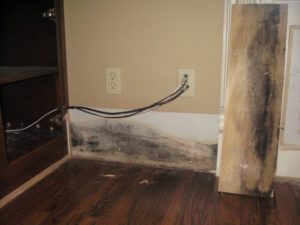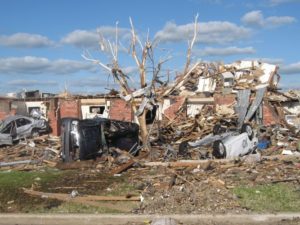Commercial Generator
Recent news stories concerning Hurricane Sandy and the major storms in Phoenix in 2014 have illustrated the need for emergency generators on a commercial level, particularly for those businesses that handle products that require refrigeration or depend on continuous power for critical business functions. Without a back-up generator on site, you may end up losing tens of thousands of dollars of product within a very short period of time. Grocery stores, for example, must dispose of refrigerated perishables if their coolers have been taken off line for much less time than you might think.
While not every business needs to be concerned with spoiled food, most do need electrical power to run their operations. If you own a business that deals directly with the public, then a power outage could shut you down for the entire day or longer, resulting in profit loss. If you own a business that handles design and networking for other corporations, than power loss could potentially shut you down for much longer. It’s easy to see why having a back-up generator is an absolute necessity for virtually any type of business, but it’s not always easy to see which type of generator might be right for your business.
Choosing the Right Type of Generator
Large Commercial Generator• Standby generators are preferable. These stationary generators will begin whenever power is interrupted, and will run until power is restored. Standby generators are more expensive, and generally require more floor space than portable generators, but the value of having an automatic fail safe cannot be overstated.
- The right type of fuel source is also important. One of the most universally applicable fuel sources is natural gas. Natural gas generators tend to have far fewer regulations than sources like diesel, and the actual cost of the fuel will be lower as well. Prices will vary by state and location, but natural gas tends to be the winner where price is concerned. Natural gas is also very reliable as an emergency energy source.
- Another option will be the voltage. Commercial generators tend to come in many different voltage categories which are meant to cater to different businesses that have differing power demands. If your business runs a large amount of computers and server banks, then you may need a generator that can provide high amounts of sustained power. An electrician can help you to determine which voltage will be best for your building, but you can also read your own electrical panel on your commercial building to see what your incoming voltage is rated at.
Backup Generator
Make sure your generator is up to date. Improvements in generator technology lead to more efficient fuel usage for prolonged periods of time. What was considered efficient in the 1980’s may actually consume twice as much fuel as what’s currently available. While you may think that you’re saving on costs by continuing to ignore your back up, you could end up losing more if you have to rely on an outdated model. This is all without noting the possibility of an older generator having a higher failure rate.
These are just some of the considerations that you should take into account when shopping for a commercial generator that will serve your business. You may have alternate energy options depending on your location, such as the ability to rely on solar energy used alongside your generator. It’s also worthwhile to look into incentives for purchasing “green fuel” back up generators, which may be available in your state.
Be aware that when a power failure happens as a regional event, it is likely that cell service will not be available either. Further, if you are using VOIP (voice over internet protocol) via your wireless or cable service, you will probably not have “landline” phone service either. This could seriously hurt your ability to carry on with the business.
Whichever you decide, be sure to choose a generator which can offer you the longest sustained energy for the lowest cost. It could make a big difference if and when power interruption occurs in your area.
MAJOR POWER OUTAGES 2003 – 2013 LISTED BELOW
2003
On July 22, a severe wind storm knocked out power to over 300,000 customers in the Memphis, Tennessee, metropolitan area.
On August 14, the Northeast blackout of 2003, a wide-area power failure in the northeastern USA and central Canada, affected over 55 million people.
On September 19, Hurricane Isabel knocked out electricity for 4.3 million people across nine US states and parts of Ontario, Canada.
2005
Starting Aug 31, 2005, Hurricane Katrina caused widespread power outages throughout Louisiana, Mississippi, Alabama, Florida, Kentucky and Tennessee. Exact totals are hard to even define especially in Louisiana parishes which became unoccupied for months. Power was also knocked out to 1.3 million customers when Katrina passed over Florida several days earlier. In total 2.6 million people were left without power as a result of the storm across the United States.
2006
On August 2, nearly a quarter million customers of Hydro One lost power after severe thunderstorms that included tornadoes and damaging wind ripped through southern and eastern Ontario.
2007
From December 8 to 12, a series of ice events cut power to over one million homes and businesses across the Great Plains of the United States, including large portions of Oklahoma, Kansas, and Nebraska.
On September 8, 2008, Hurricane Ike landed in Galveston and left over 2 million customers without power in the Greater Houston area. Power to one million homes was restored by day 6 and to two million homes by day 16.
On December 11, rare winter snowfall on Southern Louisiana caused 10,000 power outages, due to the accumulation of snow on transmission lines. Later that night in Massachusetts and New Hampshire, an ice storm hit, causing one million people to lose their power.
On December 12, a large ice storm in Northeast USA took out power lines from Maine to Pennsylvania due to ice buildup on wires and trees and branches falling on power lines. At the peak of the outages, about 1.5 million people were without power. It took about two weeks to restore power to all locations.
On December 26, power was lost for about 12 hours on the entire island of Oahu, Hawaii starting at about 6:45 pm, where then President-elect Barack Obama and his family were vacationing. This is now confirmed to be due to lightning strikes on power lines, which caused HECO’s system to trip.
2009
On November 10, 22:13 Brasília official time, power was cut out to most states of Brazil due to a failure of transmission lines from Itaipu Dam, the world’s second largest hydroelectric dam, affecting over 80 million customers. The failure was caused by a major thunder storm which affected a key transmission line to southeastern Brazil causing the hydroelectric power-plant’s all 20 turbines to shut-down due the abrupt fall of power demand. Four of Brazil’s most densely populated states entirely lost electric power (including the states, and its capitals of the same name, of São Paulo and Rio de Janeiro) with 14 more states being partly affected. The entire country of Paraguay experienced the power failure. It took about seven hours to the system to fully recover. This is regarded as one of the largest blackouts in man’s history.
2010
In early February, a pair of blizzards hit the Northeastern US on 5–6 February and again just a few days later on 9–10 February. Among the hardest hit areas was the Baltimore-Washington corridor, with well over 200,000 people impacted at the height of the outages and about two-thirds of those without power for periods lasting from half a day to several days. Other urban areas, such as Pittsburgh, were also hard-hit.
On March 14, a severe windstorm knocked out power to hundreds of thousands of customers primarily in southwestern Connecticut as well as parts of Westchester County and Long Island, and New Jersey as a result of a severe wind and rain storm. The outage lasted as long as six days for some customers in the hardest-hit communities. Many Public School districts were also closed for up to five days the following week.
On July 15, 76,000 people in Oakland & Wayne counties in southeastern Michigan lost power at approximately 19:00 during heavy storms. As of 12:00 on July 16, power still had not been fully restored.
On July 25, an estimated 250,000 Pepco customers lost power in the Washington, D.C. area, due to severe storms that swept through the area.
2011
On February 2, in Texas, forced outages at two major coal-fired power plants and high electricity demand due to cold weather caused rotating blackouts affecting more than one million customers.
On April 27, one of America’s most devastating tornado outbreaks knocked out power to most of northern Alabama; some 311 high-tension electrical transmission towers were destroyed by multiple, violent tornadoes.
On August 27–28, Hurricane Irene caused over five million power outages.
On September 8–9 widespread power outages affected parts of Southern California and Arizona, as well as parts of northwestern Mexico. Started by monitoring equipment that was causing problems at a power substation in southwest Arizona. As of 17:08, power had been fully restored in the Yuma, Arizona area. Over five million people were affected.
In late October, a snowstorm along the East Coast of the USA caused over two million power outages. Some residents of Connecticut and western Massachusetts were without electricity for over seven days.
2012
On June 29, a line of thunderstorms with hurricane-force winds swept from Iowa to the Mid-Atlantic coast and knocked out power to more than 3.8 million people in Indiana, Ohio, West Virginia, Pennsylvania, Maryland, New Jersey, Virginia, Delaware, North Carolina, Kentucky, and metropolitan Washington, DC.
On October 29–30, Hurricane Sandy brought high winds and coastal flooding to a large portion of the eastern United States, leaving an estimated 8 million customers without power. The storm, which came ashore near Atlantic City, New Jersey as a Category 1 hurricane, ultimately left scores of homes and businesses without power in New Jersey (2.7 million), New York (2.2 million), Pennsylvania (1.2 million), Connecticut (620,000), Massachusetts (400,000), Maryland (290,000), West Virginia (268,000), Ohio (250,000), and New Hampshire (210,000). Power outages were also reported in a number of other states, including Virginia, Maine, Rhode Island, Vermont, and the District of Columbia.
2013
On February 8–9, some 650,000 homes and businesses in the northeastern US lost power as the result of a powerful nor’easter that brought hurricane-force wind gusts and more than two feet of snow to New England.
On December 22, a major ice storm covering an area from Ontario to as far east as the maritime provinces in Canada, caused power failures. According to reports, as many as 300,000 customers in Toronto lost power. Later reports place the peak number in Ontario without power at 600,000. The storm also caused widespread power outages in mid-Michigan. According to reports, as many as 500,000 lost power with restoration efforts expected through December 29.
Source: http://en.wikipedia.org/wiki/List_of_major_power_outages
If your friends, family and neighbors have had significant damage to homes or businesses you can contact Reset Restoration 24/7 to inquire about Tulsa restoration services. Call Reset Restoration today at (918) 582-7373.
If your Tulsa home or business has suffered significant damage, please contact Reset Restoration today and request a free quote on storm damage restoration. Follow Reset Restoration on Facebook!




